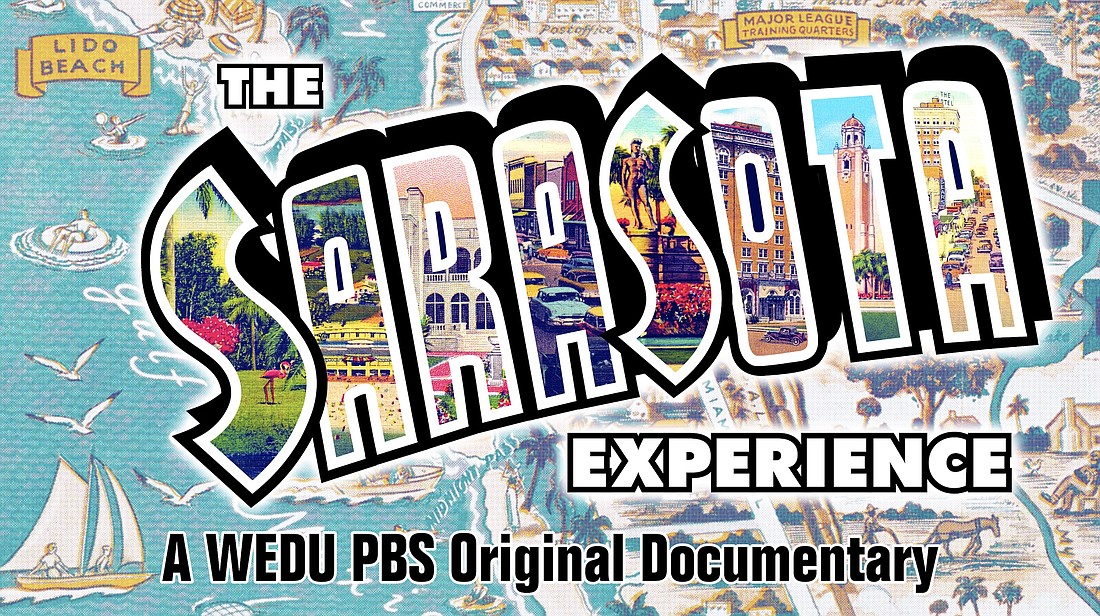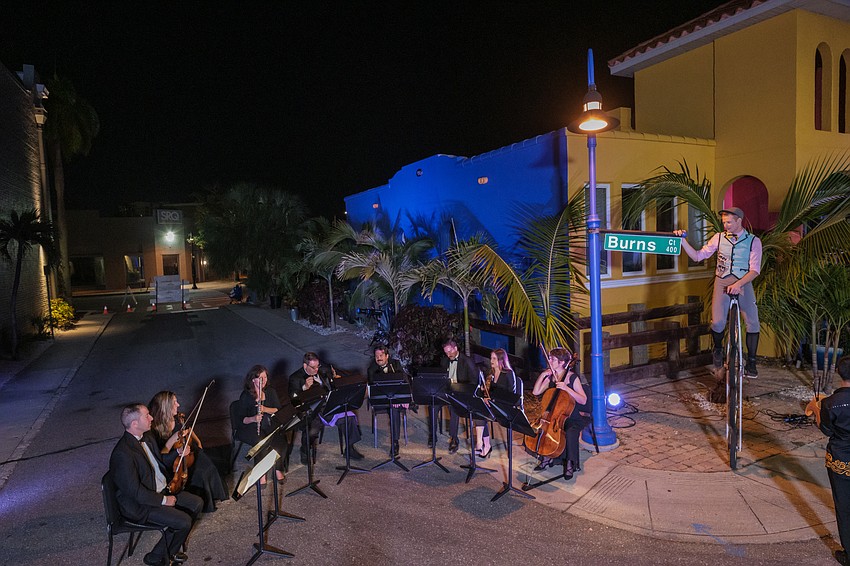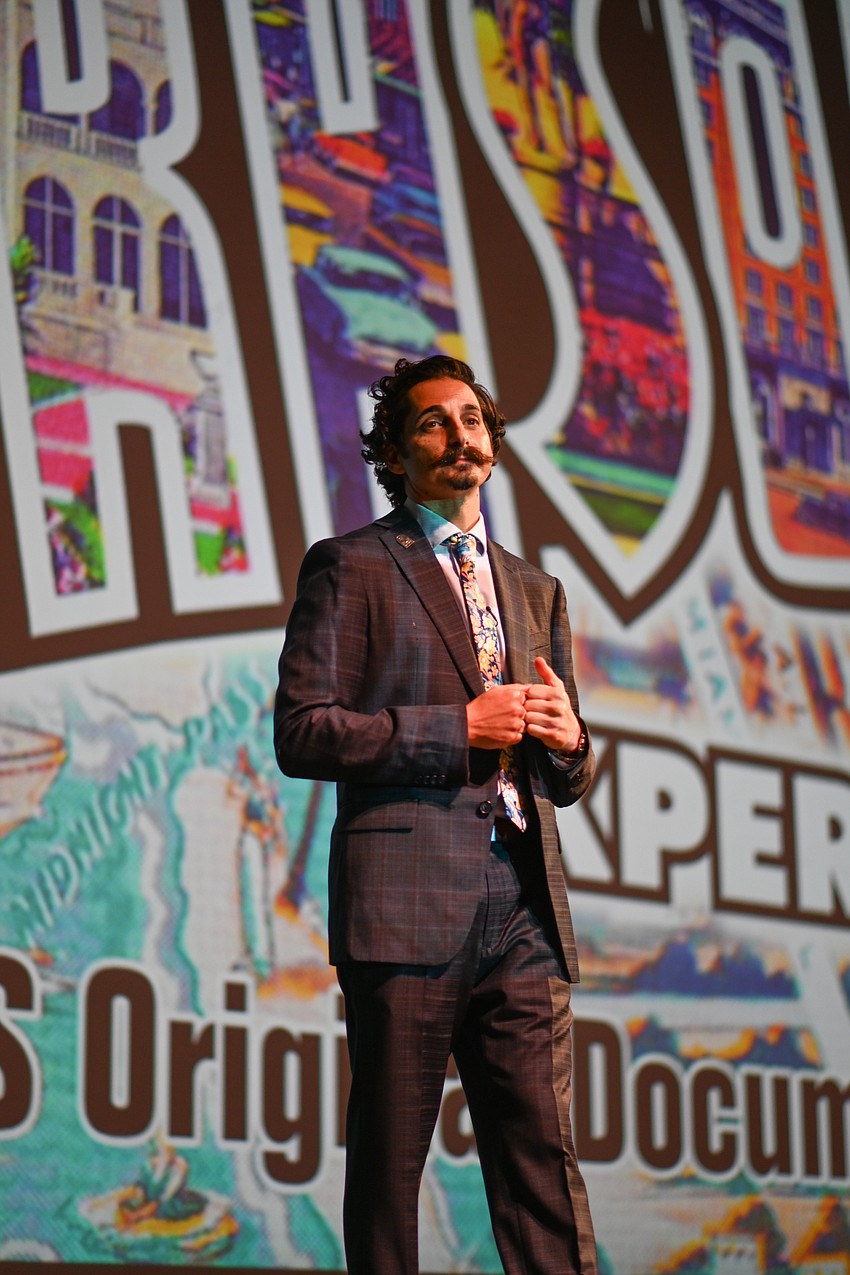- April 9, 2025
-
-
Loading

Loading

“The Sarasota Experience,” the WEDU documentary directed and produced by Shaun Greenspan, is literally the talk of the town.
“Come look at me in this movie,” said one disheveled traveler to a commuter while the two were sitting on a bench at the downtown transfer station for the Sarasota County bus. “I’m on YouTube.”
Lots of documentaries win fans among history enthusiasts, cultural elites, subject matter experts and the like. But if anecdotal evidence is any indication, “The Sarasota Experience” has captured the hearts of people who don’t typically embrace the genre such as young audiences and those on the fringes of society.
When the documentary was screened at the Sarasota Opera House on April 13, WEDU CEO and President Paul Grove said he had never seen so many young people at the venue.
One obvious reason for the wide appeal of “The Sarasota Experience” is the filmmaker himself. At 44, he is relatively young and spent his formative years here, having moved to Sarasota from Connecticut when he was 12. He is at home in the city and among its different cultural subsets.
Like most documentarians, Greenspan is a history buff. In fact, his doc about the Historic Sarasota County Courthouse, “Original Splendor,” helped him get the job to direct “The Sarasota Experience,” according to Kristine Kelly, executive producer and director of content at WEDU, a PBS member station.
But, unlike most documentarians, Greenspan spent about a decade producing music videos and commercials and working on TV shows in Los Angeles. He began his career as a club deejay specializing in electronic dance music. His email address pays tribute to his alter ego DJ Solo.
Greenspan’s musical street cred is front and center in the opening scene of “The Sarasota Experience.” Members of the Sarasota Orchestra perform Dvorak’s Symphony No. 9 while a cavalcade of 60 artists representing organizations such as The Sarasota Opera, Sarasota Contemporary Dance, West Coast Black Theatre Troupe, The Circus Arts Conservatory and many others embark on a spirited nighttime romp that begins in front of Burns Court Cinema.

Told the rousing set piece is reminiscent of the beginning of Damien Chazelle’s “Babylon,” the little-seen 2022 film about the early days of Hollywood, Greenspan cites Chazelle’s 2016 Oscar Best Picture winner “La La Land” as one of his inspirations for the opening sequence.
The others? Spike Lee’s “Do The Right Thing” because it “takes place on a single street,” and Orson Welles’ “Touch of Evil,” which opens with a four-minute tracking shot.
“I came up with the idea about four or five years ago,” Greenspan said. “Every time I walked by Burns Court Cinema, I thought of ‘Do The Right Thing,’ which takes place on a single street.”
It was up in the air where the Burns Lane sequence would be used in “The Sarasota Experience,” according to Kelly. She says that everyone ultimately agreed that it made sense to open with the procession to establish a joyful, artistic sensibility.
“We wanted a real ‘Wow!’ at the beginning,” Grove says.
Starting the documentary with a parade of performers is a powerful way to signal the importance of the arts in Sarasota.
It evokes the lasting legacy of John Ringling, who made the city the summer home of his circus and built the Ca’ d’Zan mansion and the John and Mable Ringling Museum. “Life is short, but art is long,” Ringling is quoted by Ringling Brothers circus historian Deborah Walk in the film.
It’s not just its opening that sets “The Sarasota Experience” apart from formulaic documentaries that weave talking heads with archival footage. Prodded about why his documentary doesn’t have the flat appearance of some others in the genre, Greenspan notes that he used three cameras instead of one for interviews.
He also took great pains to use the city’s natural beauty and its well-appointed museums as backdrops.
“In any movie a location is a character,” he said. “Some of the places we filmed at normally cost thousands of dollars to rent, but because everyone believed in what WEDU PBS does for our community, we were lucky to have them donated to us. People were just so giving.”
Among the locations featured in “The Sarasota Experience” are the Ringling Museum, Sarasota Art Museum, Ed Smith Stadium and Bayfront Park.

When Greenspan was dreaming of his Burns Court Cinema sequence, he had little idea of when and how it would become a reality. His lucky break came when he got an email in 2022 from Kelly, who wanted to produce a film commemorating the 100th anniversary of Sarasota County, which took place in 2021.
The city of Sarasota was founded in 1903, with John W. Gillespie as the first mayor, but it was part of Manatee County for nearly 20 years. (Viewers of “The Sarasota Experience” will learn a lot about Gillespie, who is credited with bringing golf to Florida and gave Gillespie Park its name.)
WEDU had been planning a documentary to coincide with Sarasota County’s centennial, but it was put on hold because the pandemic, with its lockdowns and quarantines, made such an undertaking impossible.
When it was time to get the project rolling again, Executive Producer Kelly found Greenspan’s short courthouse documentary online and sent an email. “It just came out of the blue. It was a dream come true,” Greenspan recalls.
It wasn’t just “Original Splendor” that persuaded Kelly to hire Greenspan. “It was his love for the city and his ability to be true to people and experiences,” she says.

By the time Greenspan received his fateful email in 2022, time was of the essence. He shot interviews with historians, architects, community leaders and others in “The Sarasota Experience” in just 10 days.
Greenspan credits the archival research of co-producer Lera Juno, the Sarasota County Division of Historical Resources and the William Hartman Gallery for most of the historical images used in the film.
With a film celebrating an historic occasion or famous person there’s always the danger of viewing the subject through rose-colored glasses. But Greenspan managed to avoid that pitfall. There’s no question that “The Sarasota Experience” is a love letter to a beautiful, unique city, but the camera doesn’t turn away from uncomfortable topics.
Among them are the violence and property theft inflicted on the Seminoles by the Spanish and other colonizers and the virtual disappearance of the city’s first African American neighborhood in what is now known as The Rosemary District.
Greenspan’s musical orientation is put to good use when he plays a 1950s ditty “Having Fun in Sarasota” for some interviewees and asks what the song means to them.
One of the most poignant answers comes from Vickie Oldham, president and CEO of the Sarasota African American Cultural Coalition. “That song was the exact opposite of the African American experience,” she says. “No African American felt comfortable going to Lido Beach in 1952.”
While sit-ins to break the color barrier at luncheon counters in the mid-20th century have been well-documented in print and film, few histories tell the tale of “wade-ins” to integrate Lido Beach in Sarasota and other beaches in the South the way Greenspan does.
At first it seems odd that the Blacks entering the water at Lido Beach are dressed in their Sunday best, but “The Sarasota Experience” notes that the demonstrations usually took place after church.
The opportunity to change society by getting involved is a recurring theme in “The Sarasota Experience.” Exults entrepreneur Anand Pallegar in the film, “You truly have the ability to shape the fabric of this community by getting engaged and being passionate about what you care about.”
The Sarasota Experience” aired on WEDU on April 20 and screens again on June 1 and June 29. It can be seen for free online. Those who can’t get enough will be glad to hear that WEDU plans to package unseen interview footage into a series called “Voices of Sarasota” that will come out later this year.